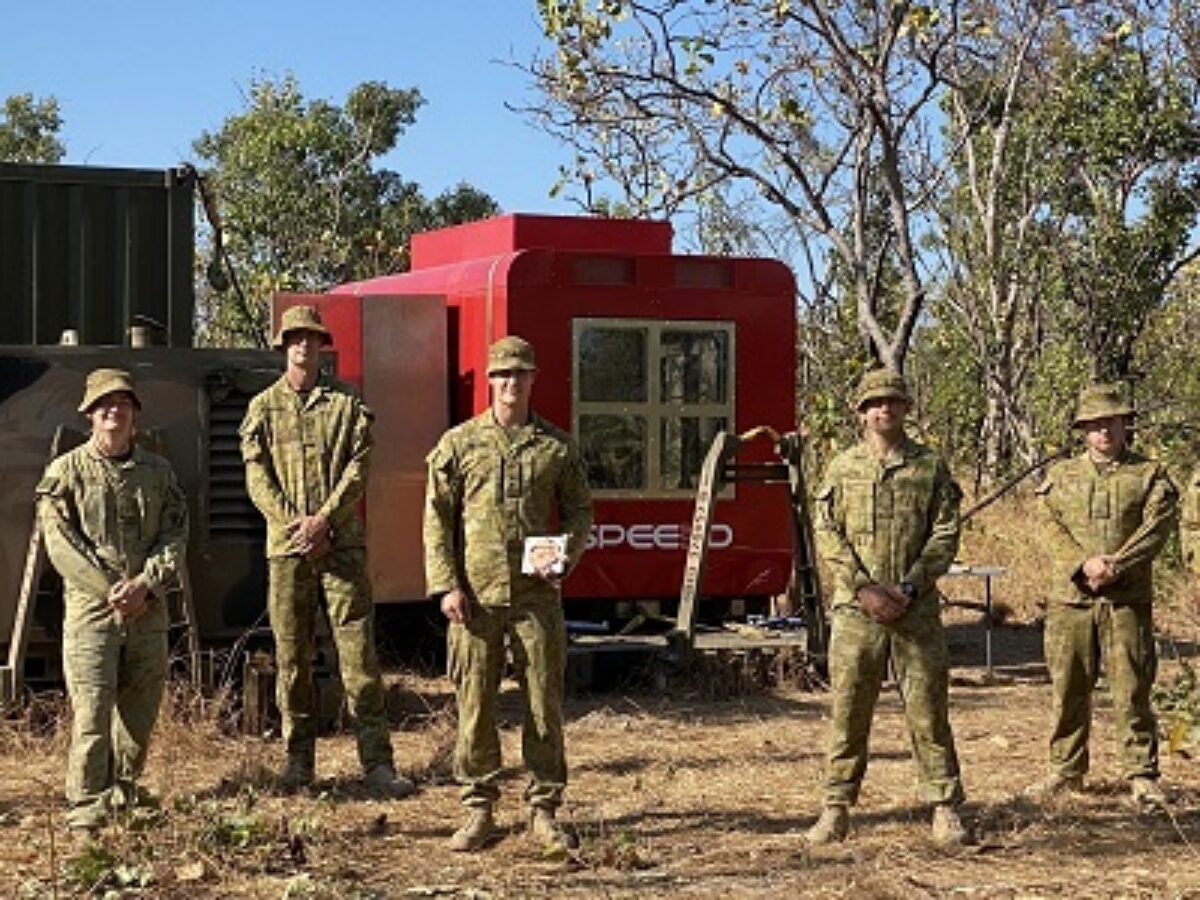Land Forces 2022 – 3D printing to revolutionise logistics at the front

Today in our special editorial series Land Forces 2022, we look at additive manufacturing technology and how it is set to bring manufacturing to the front. Here Peter Roberts profiles metal 3D printer manufacturer, SPEE3D.
For electrical engineer Steven Camilleri, co-founder and Chief Technology Officer of metal 3D printer manufacturer SPEE3D, the times are right to usher in the use of additive manufacturing in the battlefield.
Once used only for prototyping, 3D printing has matured to the stage where it is entering manufacturing in fields such as automotive and aerospace, but it is in defence material where it could really come into its own for Australia.
Camilleri points out that Australia’s great distances, plus our loss of manufacturing capability, means in any conflict our supply chains for spare parts would be long and easily interdicted.
Camilleri said: “We have given away a lot of our capability in the past 20 to 30 years – it is surprising what you can’t get manufactured in Australia.
“We can now solve a lot of these problems in a way that wasn’t there before.”
With Russia and Ukraine facing supply chain problems, the case for SPEE3D’s LightSPEE3D or WarpSPEE3D metal printers has never been stronger.
Ukraine, for example, is faced with the impossible task of maintaining numerous weapons systems sourced from newfound allies in the field.
Additive manufacturing, a technology which creates minimal waste and can produce parts in minutes or days from digital files that can be downloaded on demand, is one answer.
Said Camilleri: “We have an ability to respond instantly to unforeseen needs, it is a very powerful technology.”
High end 3D printers generally utilise exotic metal powders and lasers to deposit metal to slowly build up a three dimensional part.
The SPEE3D process relies on kinetic energy – blasting a surface with particles at supersonic speed – rather than thermal energy from a laser or electron beam to deposit metal.
So there is less deformation of parts, allowing parts to be built up at up to 1,000 times the speed of conventional metal 3D printing, and at a fraction of the cost.
SPEE3D has completed more than two years of trials with the Army (pictured), utilising their WarpSPEE3D 3D printer to make metal parts in the field during live exercises. After printing, the parts still need some machining to complete.
Camilleri said the company had successfully made fully validated parts which had been fitted to Australian Army armoured vehicles for trials.
“We have demonstrated that our printers can make the kind of parts on demand that would otherwise take weeks to get out into the field – the parts have been functioning perfectly well in the field.”
Most recently the company printed metal parts including bronze anchors manufactured in six minutes during the Naval Sea Systems Command (NAVSEA) Repair Technology Exercise (REPTX) in the United States.
This included successfully printing metal parts on board a naval vessel ‘that was rocking around’ at sea.
Camilleri said these parts were the first successfully printed using additive manufacturing technology at sea, trumping claims by Xerox that it had achieved this feat.
“While they can claim the first printed part made at sea, it didn’t work.”
For Camilleri and co-founder Byron Kennedy SPEE3D is the second business they have created, following their success founding Motion Technologies which commercialised an efficient electric motor originally used in the Charles Darwin University World Solar Car Challenge.
While most metal 3D printer companies aim to make novel, high value parts used in fields such as aerospace, SPEE3D was founded in 2018 to focus on more everyday parts – the basic nuts and bolts if you please that an engineer can hope to repair in the field.
“We came at it from a different angle.
“We weren’t trying to develop new and exotic ways to make novel parts – we wanted to use a new and exotic process to make normal stuff…and make it for the price that you get when you just buy them off the shelf.”
Instead of trying to persuade users to buy something novel, Camilleri said it made more sense to give them a machine that would make the things that they need.
Camilleri said that while Australia could not compete in mass production, it could through technologies such as 3D printing which overcame the issue of a lack of low cost labour.
“This technology allows us to build parts in the range of $50 to $100 per kilogram.
“That’s well within the standard price range.”
More reading:
ARMY, SPEE3D RELATIONSHIP TO EXTEND WITH A NEW 12-MONTH TRIAL
SPEE3D SUCCESSFULLY PRINTS PARTS AT SEA FOR US NAVY – REPORT
@AuManufacturing’s special editorial series Land Forces 2022 is brought to you with the support of Thales Australia and BAE Systems Australia.

![]()
Picture: SPEE3D
Topics Defence Manufacturing News Technology
@aumanufacturing Sections
Analysis and Commentary Awards Defence Manufacturing News Podcast Technology Videos






